Abstract
Clinical, electrophysiological and histological findings in four patients accidentally poisoned with the organophosphorus insecticide Dipterex are reported. Three to five weeks after insecticide ingestion signs of a distal sensorimotor (preponderantly motor) neuropathy occurred. The patients complained of paraesthesia in the lower limbs, and two of them of very disagreeable pricking sensation in the soles of the feet, responsive to carbamazepine. They showed distal weakness mainly of the legs, footdrop , difficult gait and muscle hypotonia. Ankle jerk was abolished while other tendon reflexes persisted. Two months or even later after poisoning, knee jerks in all the patients were very brisk and more and less accompanied by other pyramidal signs (patellar clonus, abolishment of abdominal cutaneous reflexes, Babinski's sign). Clinical, electrophysiological and nerve biopsy data revealed a "dying-back" neuropathy in our patients. Distal muscle fatigue was confirmed by failure of neuromuscular transmission on repetitive nerve stimulation.
Full text
PDF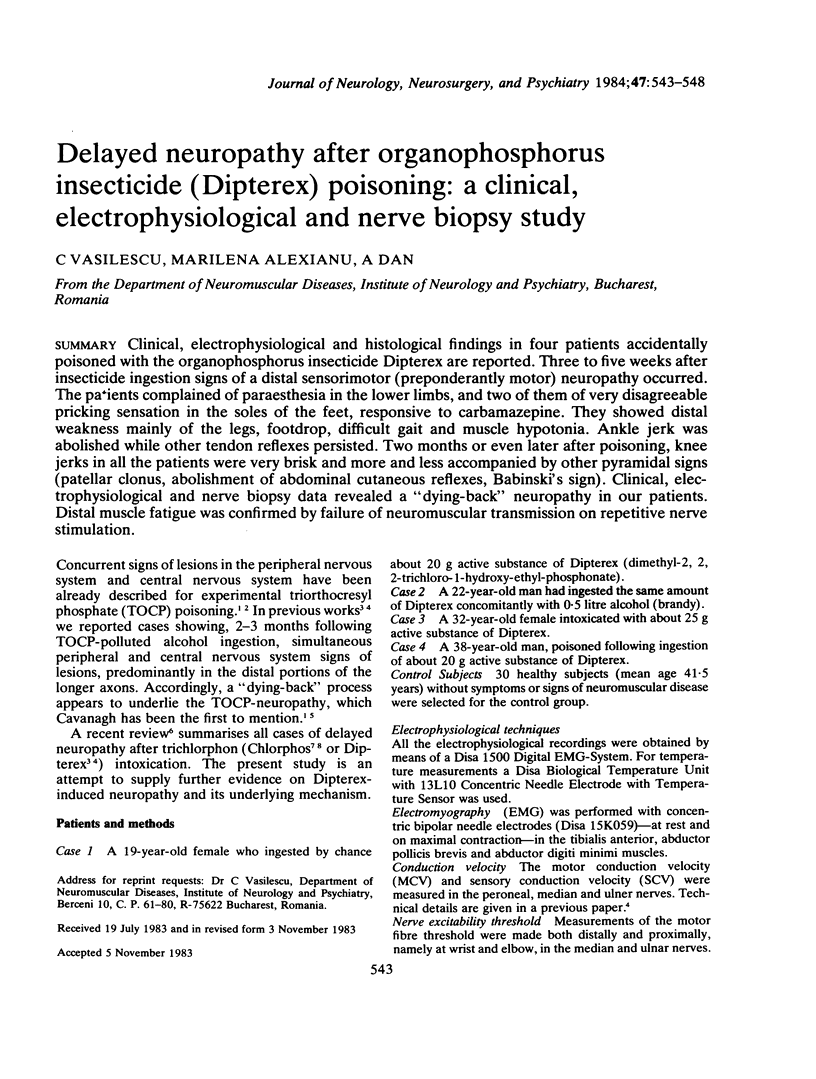
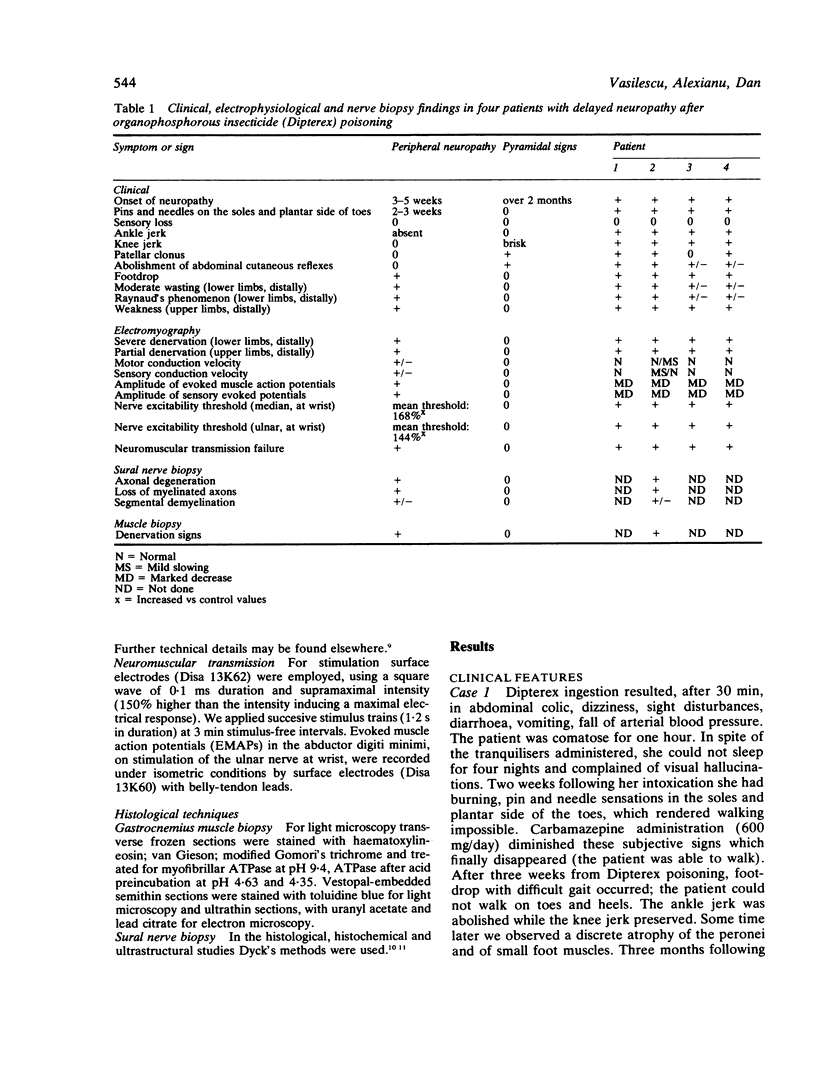
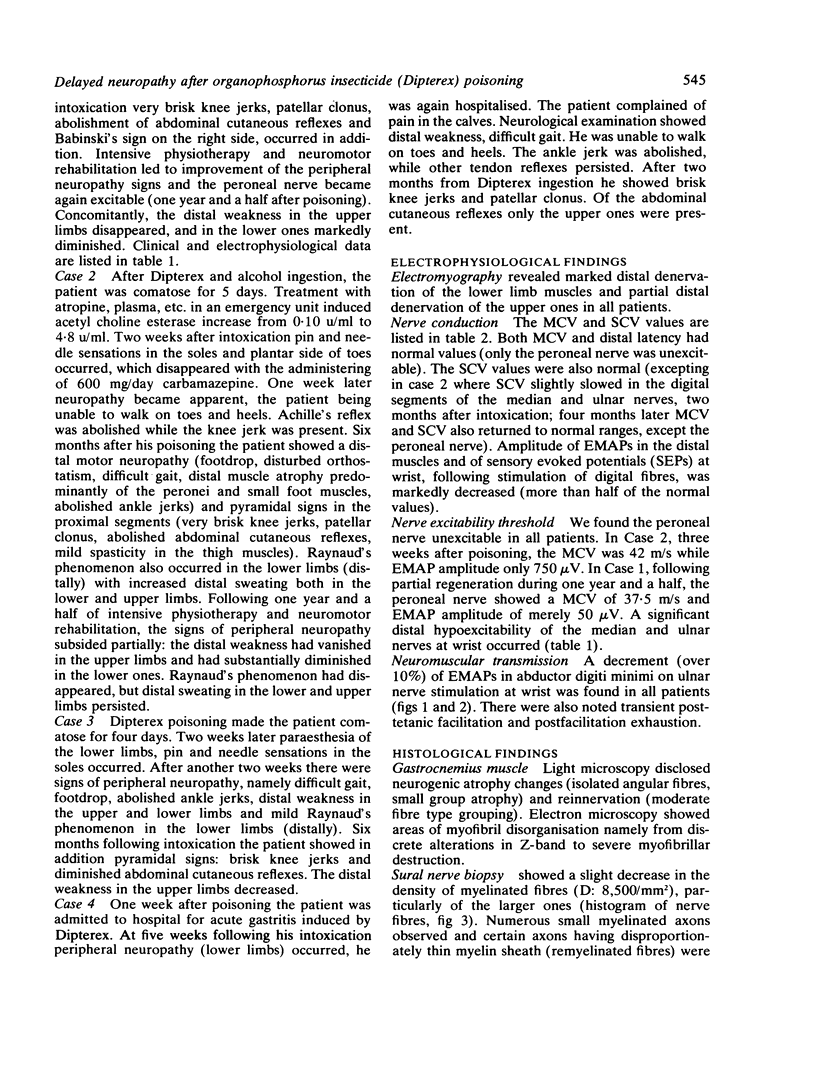
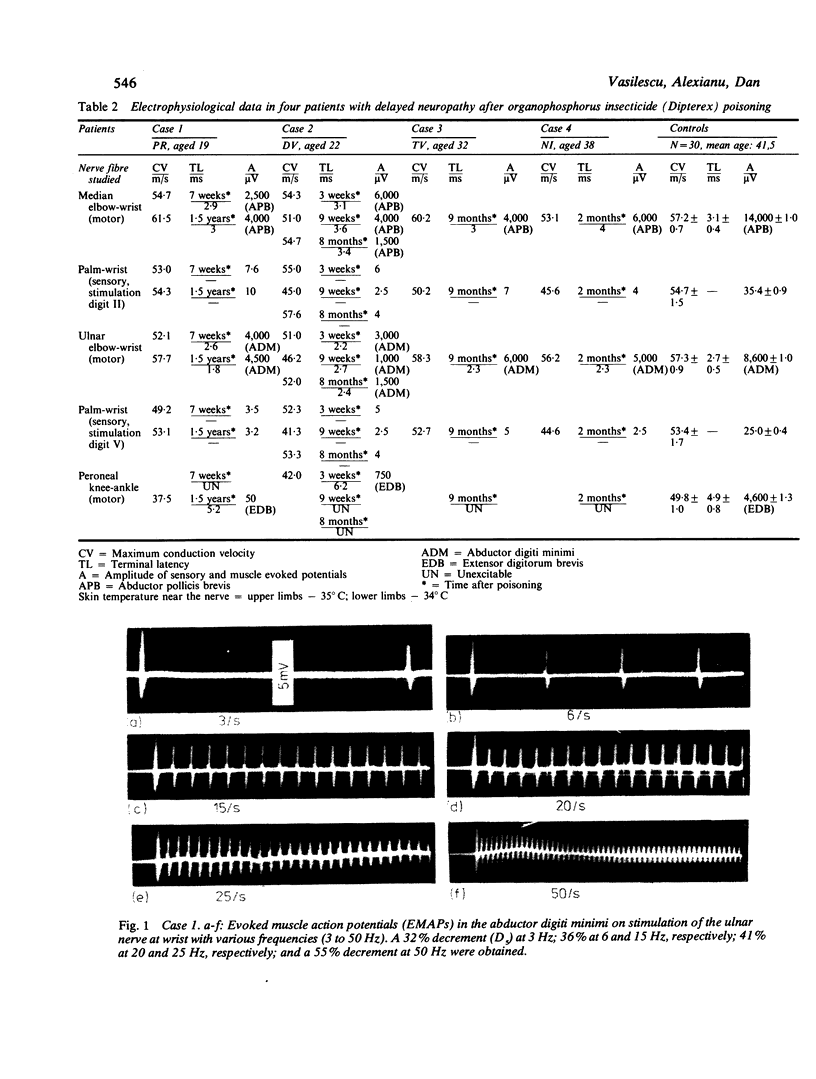
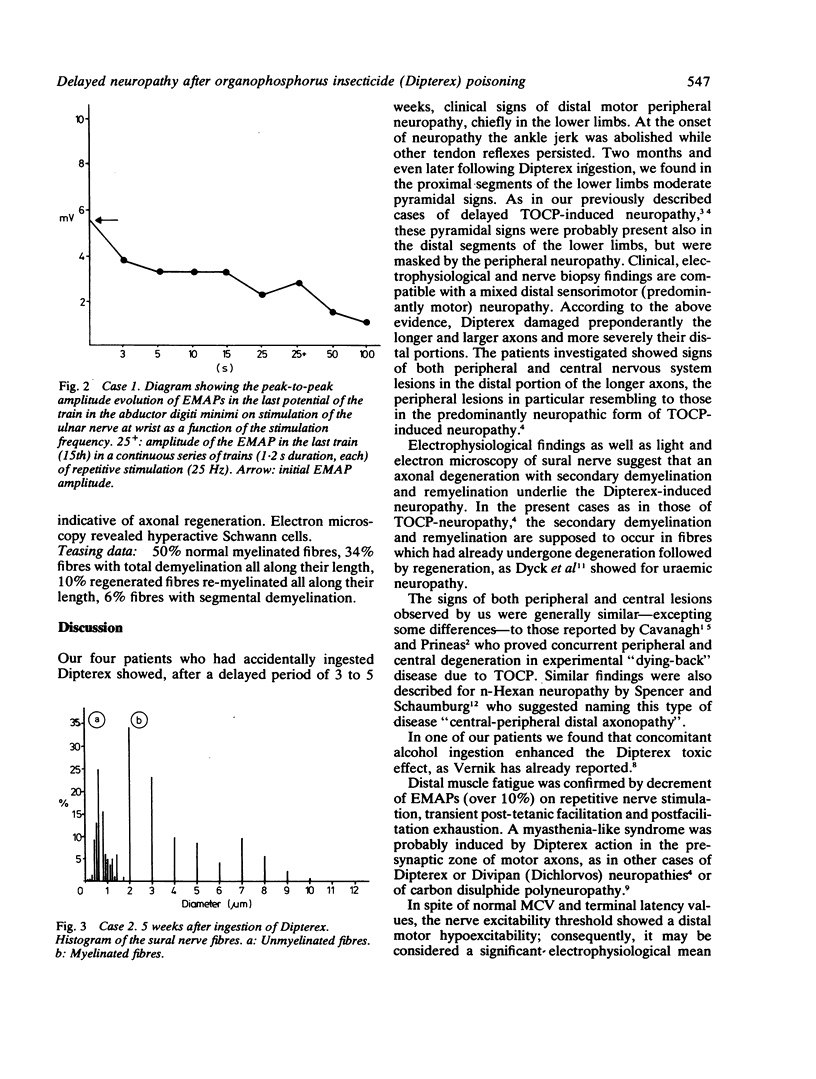
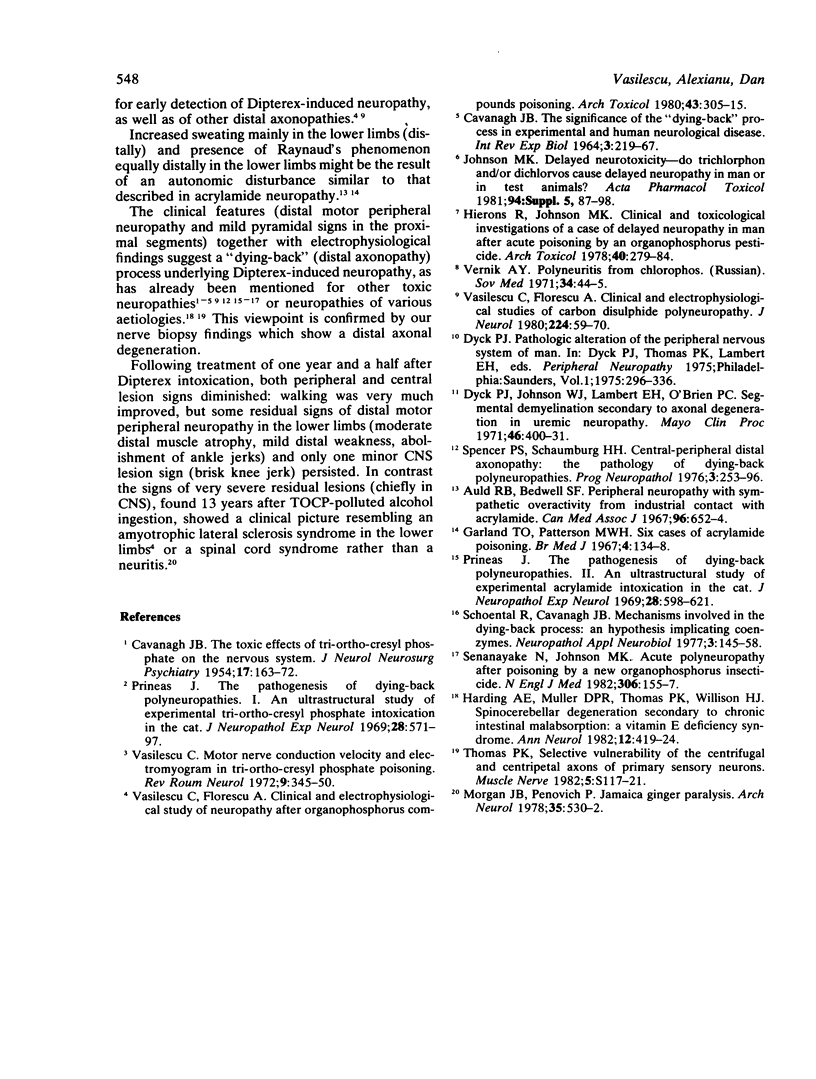
Images in this article
Selected References
These references are in PubMed. This may not be the complete list of references from this article.
- Auld R. B., Bedwell S. F. Peripheral neuropathy with sympathetic overactivity from industrial contact with acrylamide. Can Med Assoc J. 1967 Mar 18;96(11):652–654. [PMC free article] [PubMed] [Google Scholar]
- CAVANAGH J. B. The toxic effects of triortho-cresyl phosphate on the nervous system; an experimental study in hens. J Neurol Neurosurg Psychiatry. 1954 Aug;17(3):163–172. doi: 10.1136/jnnp.17.3.163. [DOI] [PMC free article] [PubMed] [Google Scholar]
- Cavanagh J. B. The significance of the "dying back" process in experimental and human neurological disease. Int Rev Exp Pathol. 1964;3:219–267. [PubMed] [Google Scholar]
- Dyck P. J., Johnson W. J., Lambert E. H., O'Brien P. C. Segmental demyelination secondary to axonal degeneration in uremic neuropathy. Mayo Clin Proc. 1971 Jun;46(6):400–431. [PubMed] [Google Scholar]
- Garland T. O., Patterson M. W. Six cases of acrylamide poisoning. Br Med J. 1967 Oct 28;4(5572):134–138. doi: 10.1136/bmj.4.5572.134. [DOI] [PMC free article] [PubMed] [Google Scholar]
- Harding A. E., Muller D. P., Thomas P. K., Willison H. J. Spinocerebellar degeneration secondary to chronic intestinal malabsorption: a vitamin E deficiency syndrome. Ann Neurol. 1982 Nov;12(5):419–424. doi: 10.1002/ana.410120503. [DOI] [PubMed] [Google Scholar]
- Hierons R., Johnson M. K. Clinical and toxicological investigations of a case of delayed neuropathy in man after acute poisoning by an organophosphorus pesticide. Arch Toxicol. 1978 Aug 9;40(4):279–284. doi: 10.1007/BF00310333. [DOI] [PubMed] [Google Scholar]
- Morgan J. P., Penovich P. Jamaica ginger paralysis. Forty-seven-year follow-up. Arch Neurol. 1978 Aug;35(8):530–532. doi: 10.1001/archneur.1978.00500320050011. [DOI] [PubMed] [Google Scholar]
- Prineas J. The pathogenesis of dying-back polyneuropathies. I. An ultrastructural study of experimental tri-ortho-cresyl phosphate intoxication in the cat. J Neuropathol Exp Neurol. 1969 Oct;28(4):571–597. doi: 10.1097/00005072-196910000-00003. [DOI] [PubMed] [Google Scholar]
- Prineas J. The pathogenesis of dying-back polyneuropathies. II. An ultrastructural study of experimental acrylamide intoxication in the cat. J Neuropathol Exp Neurol. 1969 Oct;28(4):598–621. doi: 10.1097/00005072-196910000-00004. [DOI] [PubMed] [Google Scholar]
- Senanayake N., Johnson M. K. Acute polyneuropathy after poisoning by a new organophosphate insecticide. N Engl J Med. 1982 Jan 21;306(3):155–157. doi: 10.1056/NEJM198201213060306. [DOI] [PubMed] [Google Scholar]
- Thomas P. K. Selective vulnerability of the centrifugal and centripetal axons of primary sensory neurons. Muscle Nerve. 1982;5(9S):S117–S121. [PubMed] [Google Scholar]
- Vasilescu C., Florescu A. Clinical and electrophysiological studies of carbon disulphide polyneuropathy. J Neurol. 1980;224(1):59–70. doi: 10.1007/BF00313208. [DOI] [PubMed] [Google Scholar]
- Vasilescu C., Florescu A. Clinical and electrophysiological study of neuropathy after organophosphorus compounds poisoning. Arch Toxicol. 1980 Feb;43(4):305–315. doi: 10.1007/BF00366186. [DOI] [PubMed] [Google Scholar]
- Vasilescu C. Motor nerve conduction velocity and electromyogram in triorthocresyl-phosphate poisoning. Rev Roum Neurol. 1972;9(5):345–350. [PubMed] [Google Scholar]
- Vernik A. Ia. Khlorofosnyi polinevrit. Sov Med. 1971 Sep;34(9):44–46. [PubMed] [Google Scholar]



